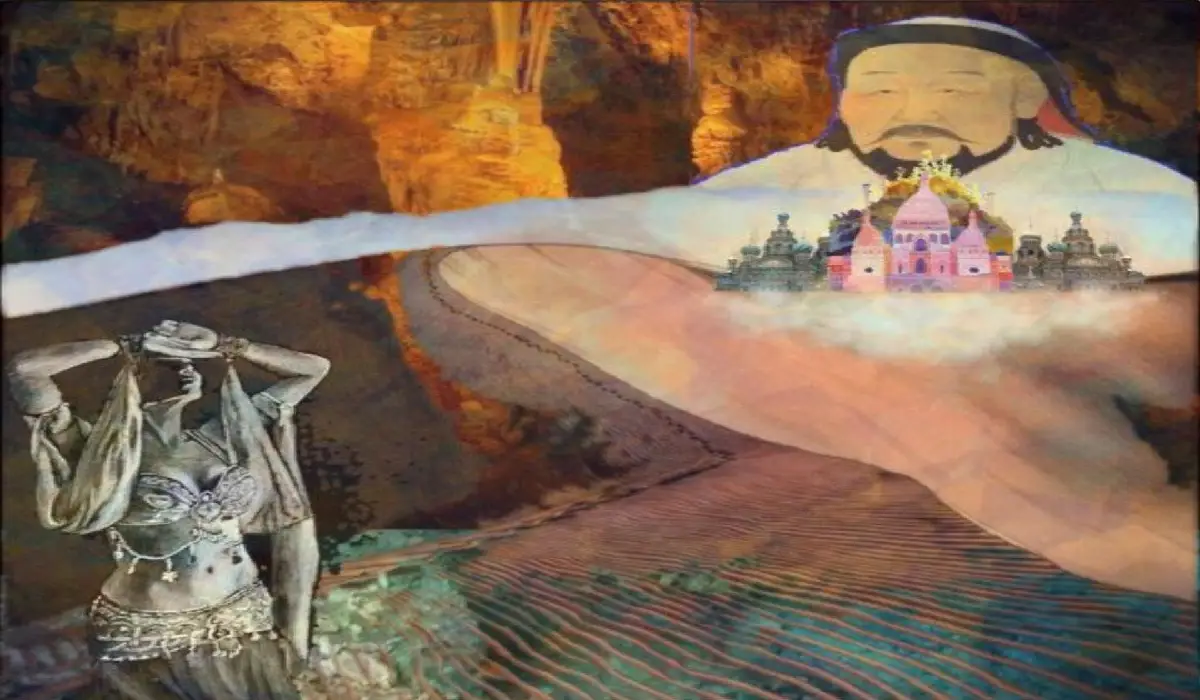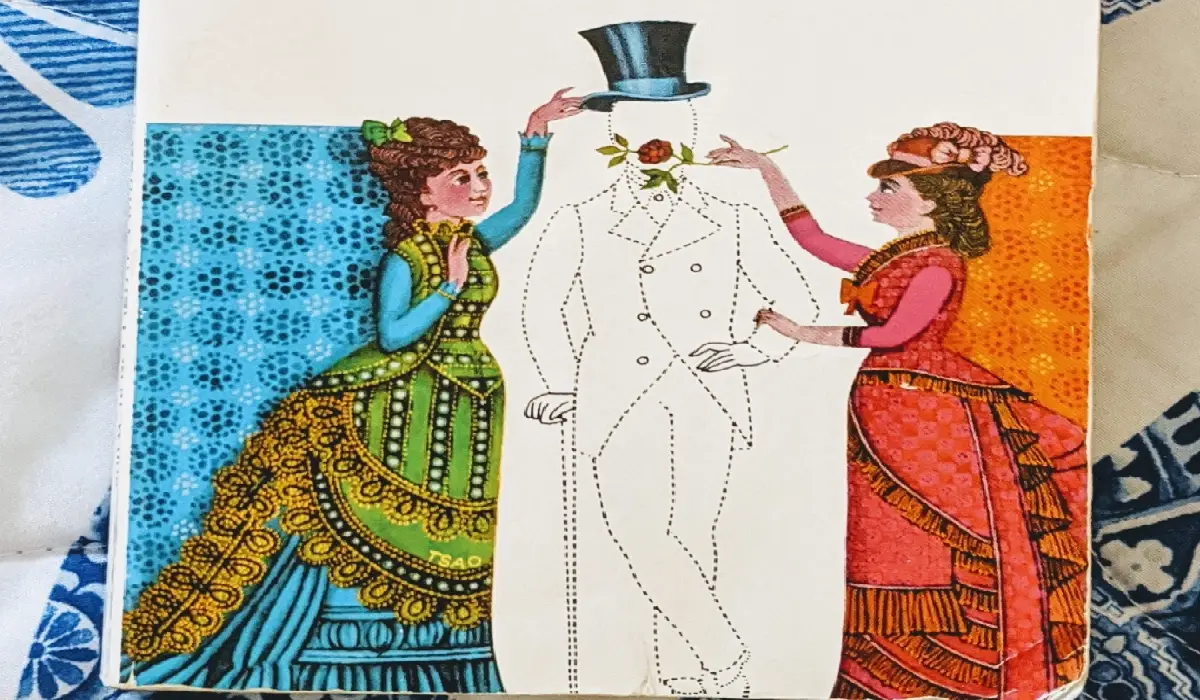
A poem composed as a simultaneous response to a vision during “a profound sleep, at least of the external senses” (Coleridge 296), this is how Coleridge describes his majestic 1816 poem Khubla Khan. The poem is a beautiful creation extracted from a dream vision, a creation in written form, extracted from mind to paper, thereby giving it an externalized mode of existence. Coleridge however ended up in composing a quite different poem from the surviving fragments of his vision. Incorporating what had originally been given to him in the dream, he adapted that to a new purpose, as suggested by the critics of the poem, a poem about creative process itself. This unique piece of creative work itself can be read as an extended metaphor or allegory on the powers of human creativity, with the river that runs through the grounds of Khan’s palace as a map of the human psyche and its creative powers. The speaker’s description of the palace and surroundings, are not entirely literal but rather a deeply coded metaphor for creative process. Indeed, the poem’s dreamlike, hallucinatory tone invokes the feeling that the speaker’s descriptions are an allegory for creativity and the human mind. Human mind is indeed complex and this gets proved on diving a bit deeper into those intricate emotions the realization dawns. The intricate and conflicting tension between these two parts of the mind, the rational and the irrational, that is where creativity spring from.
The landscape described in the beginning stanzas is the starting point for the reading of the poem as an extended metaphor for creative process. The relational pattern established in these stanzas between the chasm, fountain, river, caverns, all suggests the mind and its activities. Critic Irene Chayes argues, “the landscape with its descending levels would be the mind as structure, and the process within it, summed up in the flowing of the river, ‘meandering with a mazy motion’, the mind as activity” (Chayes 7). The poem starts with “In Xanadu” and not “At Xanadu”, this further proves how if the landscape reflects the mind and its activities, then Xanadu is the symbolic term for the human mind, if the poem is metaphor for creative process of the mind. It is indeed evident, from how the description of the palace and its grounds focuses on the sacred river named “Alph.” There is no real river called “Alph”, Coleridge invented it for the poem. However, the name echoes with the first Greek alphabet, alpha, an important letter in Christian theology. In the Book of Revelation, God describes Himself as the “Alpha and the Omega”, the first and the last, the source of all things and their end. In this sense, the river’s name hints that it is symbolically aligned with God’s creative power, indeed a model and the source for human beings’ creativity.
Further, the speaker describes the river’s course in detail and along the way, it feels like that the river is not just a symbol of human creativity alone, but a map of the human mind too, showing where that creativity actually comes from. The river begins close to Khan’s gardens, and this is significant, because, at the time the poem was written, gardens often served as symbols of reason. They represented people’s power to organize, dominate, and control nature. In this sense, the river begins with rationality springing from the reasonable parts of the human mind. The river ends in icy caverns, measureless to man where ancestral voices prophecy war. This is symbolic of the image of the subconscious, which is violent, uncontrollable, and unknowable to the rational mind. The image of the “mighty fountain,” can be viewed as the image of the meeting point between the rational and the irrational parts of the human mind. The results of this meeting is strikingly human. While describing the fountain, the speaker personifies the river, by describing it as “fast thick pants”, which feels like the heavy breaths of an exhausted or passionate person. And the fountain throws shards of rock into the air, which the speaker describes as dancing and allegorically this might refer to how human creativity produces artful works than flimsy ones like throwing the rocks to air. So, all this suggests that the speaker sees the mind as something that is divided, two halves in tension and creativity emerges directly from this tension.
According to Coleridge, imagination is the “shaping or modifying power” of the mind (Biographia 160), the “true inward creatrix”, that instantly out of the chaos of elements or shattered fragments of memory, puts together some form to fit it” (Anima Poetae 206). However, the speaker seems to be quite skeptical about his own capacity to realize that creative potential in its fulness. The speaker wants to build a pleasure dome of his own, but he only fantasizes about doing so. Though the poem celebrates the power of human creativity, it also sheds light at how such creativity is limited, fragile and temporary. the initial descriptions reveal how the place is strictly protected. The grounds of the palace are “girdled round” with “walls and towers.” So, if the palace and its grounds are symbolic to human creativity, these protections suggest that such creativity is precious and difficult to sustain.
At the start of stanza three, the speaker stops talking about Khan’s palace altogether, and discusses instead a song that he once heard from an “Abyssinian maid.” The speaker complains that he cannot revive the maid’s symphony and song and if he could, he would build that dome in air. These lines are marked by a deep sense of loss. The speaker knows that he is capable of constructing Khan’s palace, but he has lost the inspiration to do so. The speaker cannot hear the Abyssinian maid’s song, which would inspire the music loud and long necessary to build the palace in the air. These lines strongly convey that palace is indeed an extended metaphor or allegory, rather than a strictly physical place. The palace is not bound to a specific location or time period, but can rather be rebuilt anytime and anywhere, if there is a strong inspiration. This inspiration is symbolic of creative inspiration. So, Khubla Khan’s palace thereby is an image of human creativity in its entirety. However, paradoxically it is this inspiration that the speaker is yearning for. Though the speaker has experienced the inspiration necessary to create the palace, which the very existence of the poem proves, there exist this apparent despair also indicates that inspiration is fragile and fleeting. Also, the “person from Purlock”, can be viewed as yet another metaphorical reference to impediments that strikes on while in the process of creative production.
Thereby, all this prove, how Coleridge’s creative master piece Khubla Khan is indeed a metaphor for the creative process. As the basic structural pattern of Xanadu, the mind landscape, the circular motion depicts the intermingling of the conscious and unconscious, the measured and measureless aspects co-existing in the mind’s process during a creative process. The poem corresponds to the “synthetic a magical power” that “reveals itself in the balance or reconciliation of opposite or discordant qualities” (Coleridge 174), as defined Coleridge’s own critical manifesto Biographia Literaria.
Reference
- Chayes, Irene H. “‘Kubla Khan’ and the Creative Process.” Studies in Romanticism, vol. 6, no. 1, 1966, pp. 1–21. JSTOR, www.jstor.org/stable/25599673 . Accessed 19 June 2021.
- Coleridge, Samuel Taylor. “Kubla Khan by Samuel Taylor Coleridge.” Poetry Foundation, Poetry Foundation, www.poetryfoundation.org/poems/43991/kubla-khan .
- Hogsette, David S. “Eclipsed by the Pleasure Dome: Poetic Failure in Coleridge’s ‘Kubla Khan’.” Romanticism on the Net, no. 5, 1997, doi:10.7202/005737ar. Accessed on 20 June 2021.
- “Kubla Khan.” Enotes.com, Enotes.com, www.enotes.com/homework-help/analyze-theme-poetic-creativity-coleridges-kubla-254490. Accessed on 22 June 2021.
- Milne, Fred L. “Coleridge’s ‘Kubla Khan’: A Metaphor for the Creative Process.” South Atlantic Review, vol. 51, no. 4, 1986, pp. 17–29. JSTOR, www.jstor.org/stable/3199754 . Accessed on 20 June 2021.

A play that still is being discussed as a reflection of the social conventions, morality and conditions of the 19th century England.

Modernism, which was born out of rebellious spirit at the start of the 20th century, was a bold approach that sought to revive the views of life, art, politics and science of modern civilization.